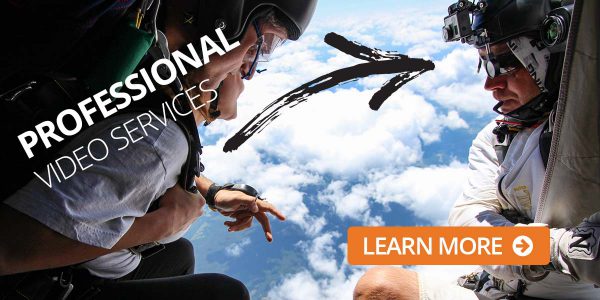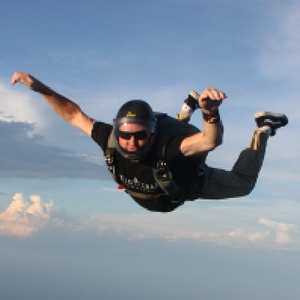Why Skydiving is 90% Mental & 10% Physical
Friday, June 16, 2017
- Skydive Orange
- 6/16/17
- 0
- Skydiving Information
 “Skydiving is 90% mental and 10% physical.” Okay–but why? As it turns out, there’s no definitive answer on this, but we say it all the time in the sport. While you don’t need to be strong or flexible to be a skydiver or to become proficient (although it certainly helps); you do, however, need to have the heart of an athlete.
“Skydiving is 90% mental and 10% physical.” Okay–but why? As it turns out, there’s no definitive answer on this, but we say it all the time in the sport. While you don’t need to be strong or flexible to be a skydiver or to become proficient (although it certainly helps); you do, however, need to have the heart of an athlete.
What this means is you need to have the ability to focus, to channel your energy onto the task at hand and to educate yourself to manage the fear. Someone with an athlete’s mentality is able to efficiently put him or herself into the coveted “zone.” That person’s self-consciousness falls away, and they’re transcending limitations.
Because skydiving is essentially about transcending limitations, we would argue that the “90% mental, 10% physical” truism has to do with the fact that the physical aspects of the skydiving sport are really only there to help to put you in the zone.
It’s simple enough to be elegant, really. Here are a few other examples of the mental and physical side of skydiving to help illustrate what we mean.
 When you’re not in the sweaty throes of hardcore team training, skydiving only has a few physically exerting moments. For instance: you land on the far side of the field, sometimes, and you find yourself lugging your parachute (How did it get so heavy all of a sudden!?) as you tromp your way all the way back to the hangar. Other times, it’s a physical trial to pack the parachute–especially when it’s new and “slippery,” or when it’s a sauna out, or when you’re creaky from some adventure you had the day before. Working with a coach can be tiring when you have a goal for the number of jumps you want to accomplish before the end of the day and you’re unused to jumping on an aggressive schedule. At any rate: Sometimes, you’re gonna sweat.
When you’re not in the sweaty throes of hardcore team training, skydiving only has a few physically exerting moments. For instance: you land on the far side of the field, sometimes, and you find yourself lugging your parachute (How did it get so heavy all of a sudden!?) as you tromp your way all the way back to the hangar. Other times, it’s a physical trial to pack the parachute–especially when it’s new and “slippery,” or when it’s a sauna out, or when you’re creaky from some adventure you had the day before. Working with a coach can be tiring when you have a goal for the number of jumps you want to accomplish before the end of the day and you’re unused to jumping on an aggressive schedule. At any rate: Sometimes, you’re gonna sweat.
The mental challenges (and benefits!) of skydiving, however, far outweigh the physical. You’ll need to knit together some neurons in learning about the equipment, of course. You’ll need to put together a mental checklist for checking each new piece of equipment you add to your gear bag. You’ll also need to build your ability to focus: on the exit, on the freefall and on your canopy objectives for each upcoming jump. You’ll need to learn to adjust your stress responses so you’re able to relax and breathe in freefall while performing the mental, physical and team working tasks the jump has in store for you. You’ll need to shore up your capacity for situational awareness, both in freefall and under your parachute, for your own safety and the safety of everyone around you. Finally, you’ll need to curry the mental capacity to face the stimulation of your fear and react correctly. The “door-phobia” struggle is very much real, especially in the beginning, and overcoming it is a bit of mental gymnastics that will serve you well for the rest of your cognitive life.
So: 90% mental, 10% physical? Yeah. But–as you’ll learn when you dig in–skydiving is much more than the sum of its parts.
The largest tandem skydiving center near Northern Virginia, Washington D.C. and Maryland.
Copyright © 2024, Skydive Orange, All Rights Reserved.
DropZone Web Design & Marketing by Beyond Marketing, LLC


